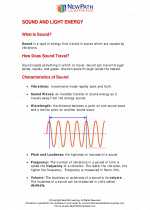Sound and light energy -> spiral galaxies
Spiral Galaxies
A spiral galaxy is a type of galaxy characterized by its distinct spiral arm structure. These galaxies are among the most beautiful objects in the universe and are often found in the vastness of space.
Characteristics of Spiral Galaxies
- Distinct spiral arm structure
- Central bulge of stars
- Rotating disk of stars, gas, and dust
- Contain a significant amount of young stars
Spiral Galaxy Classification
Spiral galaxies are classified into several subtypes based on the characteristics of their spiral arms and central bulges. The most common classification system is the Hubble sequence, which categorizes spiral galaxies into three main classes: Sa, Sb, and Sc, with additional subclasses.
Formation and Evolution
The formation and evolution of spiral galaxies are influenced by various factors such as interactions with other galaxies, gravitational forces, and the presence of dark matter. These galaxies are known to harbor active star formation in their spiral arms, giving rise to the creation of new stars over time.
Observing Spiral Galaxies
Astronomers use telescopes equipped with various filters to observe and study spiral galaxies across different wavelengths of light, from visible to infrared and radio. This allows for a comprehensive understanding of their structure, composition, and dynamics.
Study Guide Questions
- What are the main characteristics of a spiral galaxy?
- How are spiral galaxies classified according to the Hubble sequence?
- What factors influence the formation and evolution of spiral galaxies?
- How do astronomers observe and study spiral galaxies?
Conclusion
Spiral galaxies are fascinating cosmic entities that continue to captivate scientists and space enthusiasts alike. Understanding their structure, classification, and evolution provides valuable insights into the dynamics of the universe.
[Spiral Galaxies] Related Worksheets and Study Guides:
.◂Science Worksheets and Study Guides Fifth Grade. Sound and light energy

 Activity Lesson
Activity Lesson
 Worksheet/Answer key
Worksheet/Answer key
 Worksheet/Answer key
Worksheet/Answer key
 Worksheet/Answer key
Worksheet/Answer key
 Worksheet/Answer key
Worksheet/Answer key
 Vocabulary/Answer key
Vocabulary/Answer key
 Vocabulary/Answer key
Vocabulary/Answer key
